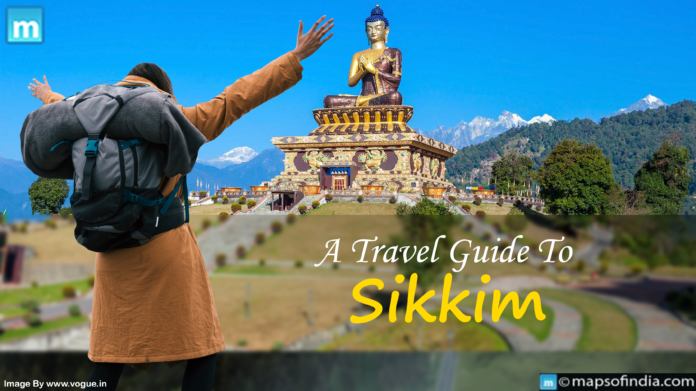Nestled amidst the towering Himalayas, Sikkim, the “Land of Hidden Treasures”, draws travelers with its beautiful vistas, rich cultural tapestry, and spiritual peace. From snow-capped peaks and green valleys to historic monasteries and vibrant festivals, Sikkim provides a remarkable experience for all travelers. To help you plan your dream trip, here’s a full guide to exploring this Himalayan paradise.
Enchanting Environs
- Mountain Majesty: Dominated by the spectacular Kanchenjunga, the world’s third-highest peak, Sikkim’s landscape is a visual feast. Trekkers can take on tough adventures through rhododendron woods and alpine meadows, while others can enjoy picturesque drives such as the Yumthang Valley and Lachung-Chopta Valley roads.
- Glacial Wonders: To taste glacial wonders, visit Yumthang Valley, often known as the “Valley of Flowers.” The valley bursts into color in spring with over 250 different alpine blooms, producing a picture-perfect scene. Don’t miss the Yumthang Hot Springs, where you can relax in the healing geothermal waters while admiring the gorgeous scenery.
- Monasteries and Mysticism: Sikkim is peppered with centuries-old Buddhist monasteries, each emanating a sense of tranquility and spirituality. Visit Sikkim’s greatest monastery, Rumtek, with its beautiful murals and towering golden statue of Maitreya Buddha. Pemayangtse Monastery is set on a hilltop and includes a collection of ancient scriptures and artifacts.
Cultural kaleidoscope
- Festival Fever: Immerse yourself in the vivid tapestry of Sikkimese culture by attending one of its many festivals. The Tibetan New Year, Losar, is a festive festival marked by colorful parades, traditional dances, and monk blessings. Dasain, the Hindu celebration of triumph, features lively processions and cultural events.
- Culinary Delights: Sikkimese cuisine has Tibetan, Nepalese, and Indian influences. Momos, steamed or fried dumplings stuffed with meat or veggies, are a staple. Try Thukpa, a warming noodle soup, or Sha Phaley, deep-fried Tibetan bread. Don’t forget to try the local Chhang, a millet-based alcoholic beverage served warm in bamboo mugs.
- A Brush with History: History buffs can learn about Sikkim’s past at Gangtok’s Namgyal Institute of Tibetology. This prestigious institute has a significant collection of Tibetan antiques, manuscripts, and thangkas (religious paintings), providing insight into the region’s rich cultural legacy.
Activities for Every Adventurer
- Sikkim is nature’s playground: With activities ranging from birdwatching at Keoladeo National Park, a UNESCO World Heritage Site, to paragliding above the Yumthang Valley. Explore the tranquil Khecheopalri Lake, which is said to have mystical powers, or go on a wildlife safari in Singalila National Park, home to the elusive red panda.
- Spiritual Sojourn: Sikkim has many meditation retreats and monasteries where you can practice yoga, mindfulness, and other spiritual disciplines. Visit the quiet Tashiding Monastery, known for its peaceful ambiance and panoramic vistas, or participate in a prayer service at Gangtok’s Tsuklakhang Monastery.
- Off The Beaten Path: For a truly unique experience, go beyond the typical tourist route. Hike to Dzongri La Pass, the entryway of Goechala Pass.
Planning Your Perfect Trip
- The best time to visit Sikkim: It is based on your choices. Spring (March-May) brings beautiful weather and blooming flowers, but summer (June-August) is good for hiking and tourism. Autumn (September-November) brings spectacular fall foliage, while winter (December-February) turns the terrain into a snow-covered wonderland.
- Getting There: Bagdogra Airport in West Bengal is the nearest airport to Sikkim. From there, take a taxi or rent a car to reach Gangtok, the capital city.
- Getting Around: Since public transportation in Sikkim is limited, hiring a cab or automobile is the most practical choice. On some routes, shared jeeps are also available.
- Where to Stay: Sikkim provides many accommodations, from upscale hotels and resorts to charming homestays.




